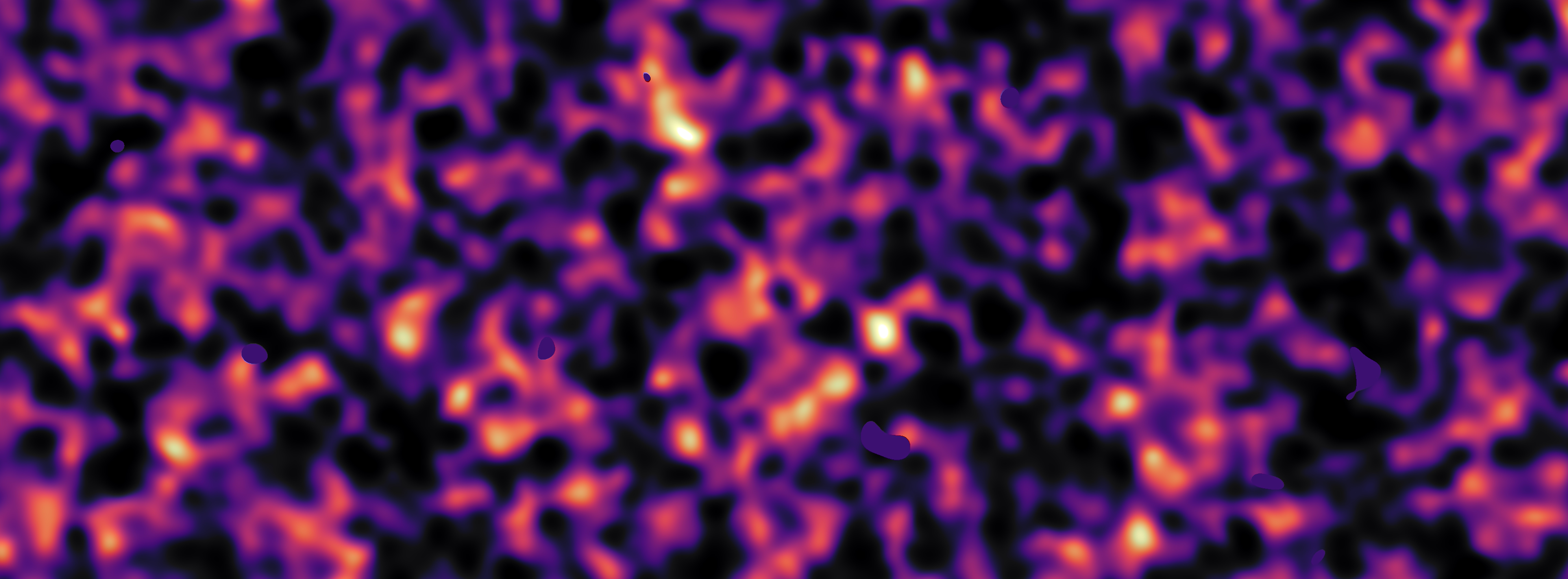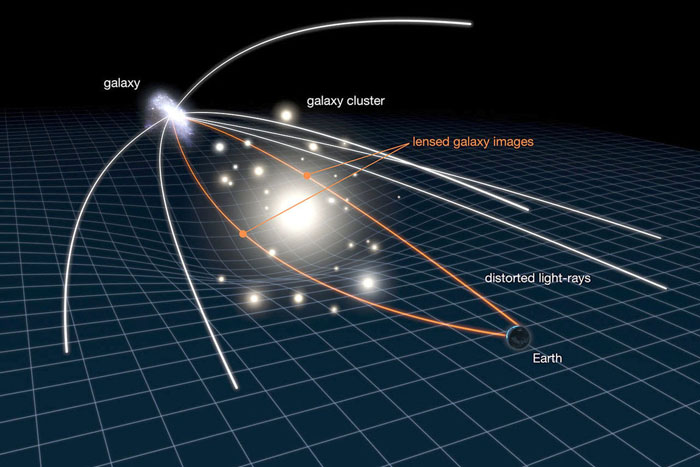Dark Matter Not So Clumpy After All

Dark matter, the mysteriously invisible substance that makes up about 27 percent of the universe, may not be as clumpy as scientists previously thought.
In 2013, researchers with Europe's Planck mission, which studied the oldest light in the universe, found that dark matter has lumped together over time through gravitational attraction. What started out as a smooth and even distribution of dark matter slowly formed dense chunks over time.
But new research at the European Southern Observatory's (ESO) Very Large Telescope (VLT) at the Paranal Observatory in Chile suggests that dark matter is not quite as clumpy as the Planck mission previously found. [In Images: Dark Matter Across the Universe]

"This latest result indicates that dark matter in the cosmic web, which accounts for about one-quarter of the content of the universe, is less clumpy than we previously believed," Massimo Viola, a researcher at the Leiden Observatory in the Netherlands who co-led in the study, said in a statement.
To see how dark matter is distributed in universe, the international team of researchers used data from the Kilo Degree Survey (KiDS) at the VLT Survey Telescope. This deep-sky survey looked at about 15 million galaxies in five patches of the southern sky, covering an area as big as 2,200 full moons (or 450 square degrees).
Because dark matter's gravity can bend light — a process called gravitational lensing — the light coming from these 15 million galaxies could reveal information about the structure and distribution of dark matter, the researchers suggest. In this study, they looked for a variation of this phenomenon known as weak gravitational lensing, or cosmic shear.

Weak gravitational lensing is a subtle effect that has to be measured with precision. When large-scale structures like galaxy clusters cause weak gravitational lensing, the light-warping effect is subtler and more difficult to detect than gravitational lensing around smaller objects like stars. But with high-resolution images taken by the VLT Survey Telescope, the researchers were able to detect this subtle effect. This study is the first to use this imaging method on such a large portion of the sky to map the invisible matter in the universe, the authors wrote.
Breaking space news, the latest updates on rocket launches, skywatching events and more!
When the researchers then used this data to calculate how clumpy dark matter is, they discovered that it is significantly smoother than the Planck satellite data had previously determined. This means that dark matter may be more evenly distributed than scientists have thought.
How dark matter has spread and clumped together since the Big Bang happened 13.8 billion years ago, can provide insights into the evolution of the universe, according to co-author Hendrik Hildebrandt of the Argelander Institute for Astronomy in Bonn, Germany. "Our findings will help to refine our theoretical models of how the universe has grown from its inception up to the present day," Hildebrandt said in the same statement.
"We see an intriguing discrepancy with Planck cosmology at the moment," co-author Konrad Kuijken of the Leiden Observatory in the Netherlands, who is principal investigator of the KiDS survey, said in the statement. "Future missions such as the Euclid satellite and the Large Synoptic Survey Telescope will allow us to repeat these measurements and better understand what the universe is really telling us."
Email Hanneke Weitering at hweitering@space.com or follow her @hannekescience. Follow us @Spacedotcom, Facebook and Google+. Original article on Space.com.
Join our Space Forums to keep talking space on the latest missions, night sky and more! And if you have a news tip, correction or comment, let us know at: community@space.com.

Hanneke Weitering is a multimedia journalist in the Pacific Northwest reporting on the future of aviation at FutureFlight.aero and Aviation International News and was previously the Editor for Spaceflight and Astronomy news here at Space.com. As an editor with over 10 years of experience in science journalism she has previously written for Scholastic Classroom Magazines, MedPage Today and The Joint Institute for Computational Sciences at Oak Ridge National Laboratory. After studying physics at the University of Tennessee in her hometown of Knoxville, she earned her graduate degree in Science, Health and Environmental Reporting (SHERP) from New York University. Hanneke joined the Space.com team in 2016 as a staff writer and producer, covering topics including spaceflight and astronomy. She currently lives in Seattle, home of the Space Needle, with her cat and two snakes. In her spare time, Hanneke enjoys exploring the Rocky Mountains, basking in nature and looking for dark skies to gaze at the cosmos.
